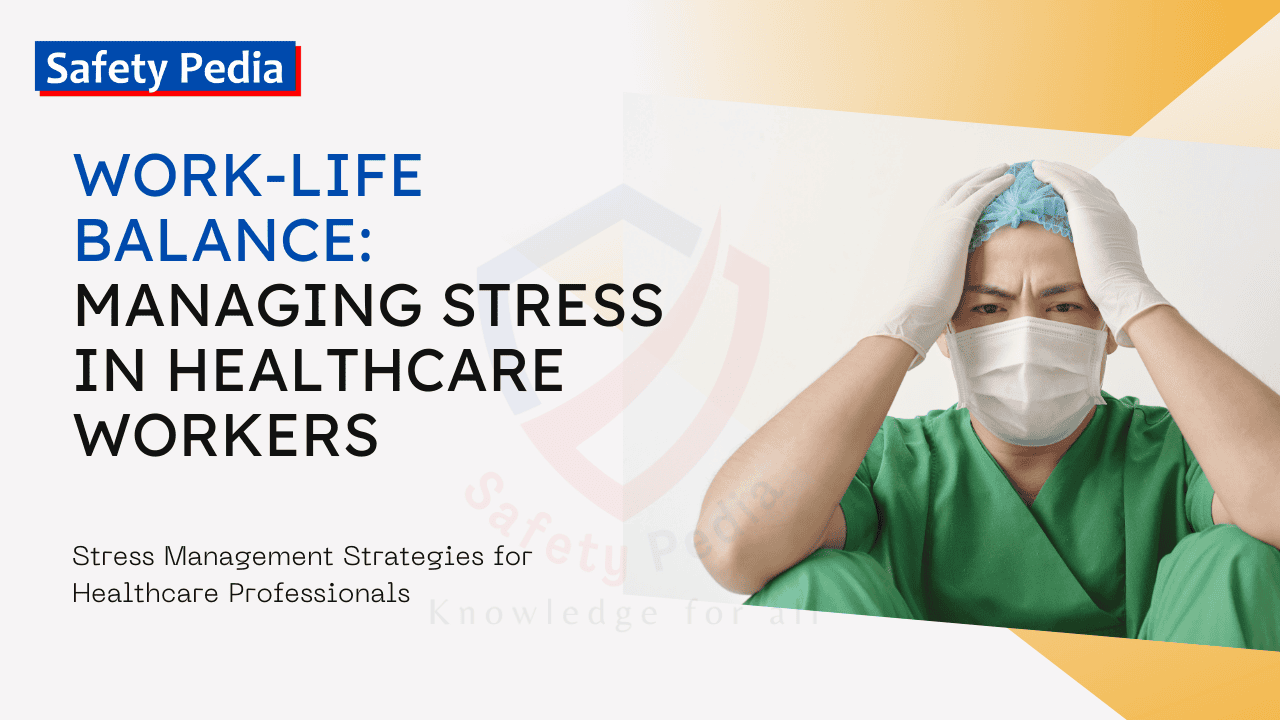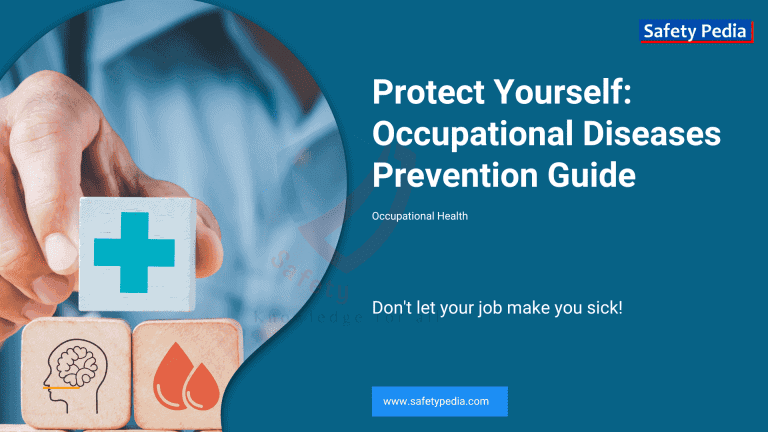
Introduction: Managing Stress in Healthcare Workers
In the high-stakes arena of healthcare, professionals are often subjected to intense pressures that can lead to burnout and stress, phenomena that are alarmingly prevalent among those in the field. The demanding nature of healthcare work, characterized by long hours, emotional intensity, and the constant need for vigilance, can erode the mental and physical health of workers, compromising their ability to provide care. Burnout, a state of emotional, physical, and mental exhaustion caused by prolonged stress, is not just a personal affliction but a growing concern that impacts the quality of patient care and the efficiency of healthcare systems worldwide.
The implications of this stress are far-reaching, affecting not only the healthcare workers but also the patients they serve and the broader healthcare infrastructure. As such, the concept of work-life balance emerges as a critical factor in the well-being of healthcare professionals. This balance is not merely a luxury but a necessary condition for the sustainability of the healthcare workforce. It involves the delicate act of juggling the demands of one’s professional responsibilities with personal life, ensuring that neither is neglected.
Achieving this equilibrium is essential for healthcare workers to maintain their compassion, energy, and effectiveness. It is a key component in preventing the onset of burnout and in developing a resilient healthcare environment where professionals can thrive. The pursuit of work-life balance is, therefore, not just an individual endeavor but a structural challenge that requires systemic changes in how healthcare work is organized and valued.
In essence, the introduction of strategies to promote work-life balance is an investment in the health of the healthcare workers themselves, and by extension, in the quality of care they are able to provide. It is a recognition of the humanity behind the healthcare profession and an acknowledgment of the limits of human endurance. In addressing the issue of stress in healthcare workers, we confront the very foundations of healthcare delivery and the need for a paradigm that honors the well-being of those entrusted with the most precious entity: human life.
What are the common stressors in healthcare?
Healthcare workers encounter a multitude of stressors that can impact their work-life balance and overall well-being, such as
- Long working hours
- Unexpected double shifts
- On-call duties
- Shift works
- High-pressure environments
- Emotional demands from patient care
- Fatigue
- The need to maintain a high level of alertness and precision
- Handling of critically ill patients
- Relationship with the patient and their families
- Harassment & Bullying
- Manual Handling
- Risk of hazardous exposures
- Pandemics; COVID-19
- Administrative work burden
These stressors contribute significantly to physical and mental exhaustion. The nature of their work exposes them to intensely stressful situations, including the care of critically ill patients, which can lead to emotional strain. Additionally, healthcare professionals frequently face the risk of hazardous exposures and the physical demands of patient handling, which can lead to injuries and chronic stress.
The administrative burden is another significant stressor, with high demands for documentation and compliance with healthcare regulations, often leaving little room for autonomy or control over work schedules. Relationships with patients, their families, and employers can also be sources of stress, due to the high expectations and pressures associated with healthcare delivery. The COVID-19 pandemic has further exacerbated these stressors, with healthcare workers experiencing increased workloads, shortages of personal protective equipment, and heightened risk of personal harm, leading to anxiety and symptoms consistent with post-traumatic stress disorder.
Shift work and long hours can significantly impact healthcare workers’ physical and mental health, disrupting circadian rhythms and increasing the risk of chronic conditions such as cardiovascular disease and gastrointestinal disorders.
Compassion fatigue is a critical issue that arises from prolonged exposure to patient suffering and the emotional labor inherent in healthcare. It can lead to emotional exhaustion, reduced empathy, and a decrease in the quality of patient care.
Organizational culture plays a pivotal role in shaping work-life balance for healthcare workers. A supportive culture that values employee well-being can mitigate stress, reduce burnout, and improve overall job satisfaction.
Moreover, the stigma associated with seeking help for mental health concerns can prevent healthcare workers from accessing the support they need, potentially compounding stress and burnout. Trust issues between management and workers, harassment, and a lack of supportive workplace environments have also been identified as contributing factors to the mental health crisis among healthcare workers. To address these challenges, initiatives that raise awareness, reduce stigma, and provide workplace and community support are essential in promoting the mental health and well-being of healthcare professionals.
Coping Mechanisms and Stress Reduction Techniques
Time Management and Prioritization
Managing time effectively and prioritizing tasks are crucial strategies for achieving a healthy work-life balance and reducing stress. Here’s a deeper look into what each technique entails:
Effective Time Management Techniques
Effective time management techniques involve identifying your most productive hours and scheduling demanding tasks during these periods. It also includes breaking down larger projects into smaller, manageable tasks and setting realistic deadlines. Utilizing tools such as calendars, to-do lists, and time-tracking apps can significantly enhance one’s ability to manage time efficiently.
Setting Boundaries and Saying No
Learning to set boundaries is essential for reducing stress and work-life balance. This means being clear about what you can take on and what you cannot, and communicating this to colleagues, clients, and family. Saying no is a powerful tool in maintaining these boundaries, as it prevents overcommitment and allows you to focus on your priorities. Remember, it must be fair, and never misuse it.
Creating clear boundaries between work and personal life is crucial for preventing burnout.
Delegating Tasks
Delegation is key to managing workload and reducing stress. It involves assessing the tasks at hand and determining which ones can be passed on to others. This not only lightens your load but also empowers team members by giving them responsibilities and opportunities to grow.
Self-Care and Well-being
Importance of Physical Health
Physical health is a cornerstone of achieving a harmonious work-life balance and reducing stress. It is the foundation upon which our daily energy and mental clarity are built, enabling us to perform at our best in both personal and professional spheres.
Stress Management Techniques
- Physical Exercise: Regular physical activity contributes to overall well-being and can help manage stress levels.
- Meditation: This ancient practice can reduce stress, increase calmness, and promote happiness. Regular meditation can help clear the mind and slow down an overactive thought process.
- Yoga: Combining physical postures, breathing exercises, and meditation, yoga can help improve flexibility, strength, balance, and endurance.
- Deep Breathing: Simple yet effective, deep breathing can help lower stress levels, reduce blood pressure, and provide an immediate sense of calm.
Nutrition and Sleep Hygiene
- Nutrition: A balanced diet provides the energy needed to tackle the day. Eating a variety of foods ensures a range of nutrients to support body functions.
- Sleep Hygiene: Quality sleep is essential for recovery and performance. Establishing a regular sleep schedule, creating a restful environment, and avoiding stimulants before bedtime can enhance sleep quality.
The Role of Hobbies and Interests
Hobbies and interests provide a necessary outlet for relaxation and personal expression. They offer a break from routine and can be a source of joy and fulfillment.
Building a Support System
In the quest for a harmonious work-life balance, building a support system is a cornerstone strategy. It’s a multifaceted approach that involves nurturing social connections, participating in peer support groups, and recognizing when professional help is necessary. Let’s explore each of these components:
Building strong support networks
Social connections are the fabric that holds our personal and professional lives together. They provide emotional sustenance, offer different perspectives, and can even lead to opportunities that improve our work-life balance and reduce stress. Strong social ties at work can lead to better teamwork and job satisfaction, while a robust personal network provides a safety net during stressful times.
Peer Support Groups
Peer support groups are valuable resources for sharing experiences, challenges, and strategies for managing work and personal life. These groups create a sense of community and belonging, which can be particularly beneficial for individuals who may feel isolated in their struggles. Engaging with peers, one can discover new coping mechanisms and feel empowered by the collective wisdom.
Seeking Professional Help When Needed
There are moments when the complexity of our challenges exceeds the help that friends and colleagues can provide. Recognizing the need for professional help is a sign of strength and self-awareness. Whether it’s counseling for stress management or consulting with a career coach for professional development, seeking expert advice can provide tailored strategies to improve work-life balance and reduce stress.
Organizational Strategies
Organizational support plays a pivotal role in the quest of a harmonious work-life balance and reducing stress. It encompasses a variety of strategies that employers can implement to assist employees in managing their professional and personal lives effectively. Here’s a breakdown of the key components under the heading of Organizational Support:
Flexible Work Arrangements
Flexible work arrangements are essential in modern workplaces. They allow employees to adjust their work schedules and locations to better fit their personal responsibilities and preferences. This flexibility can take the form of remote work, flextime, compressed workweeks, or part-time opportunities. The goal is to enable employees to work when they are most productive and balance their work with personal commitments.
Supportive Leadership
Leadership plays a crucial role in shaping the work culture and environment. Supportive leadership refers to leaders who understand the importance of work-life balance and actively encourage it. They are empathetic, communicate openly, and are willing to accommodate individual needs. By setting an example and providing the necessary resources, supportive leaders can encourage a culture where work-life balance is valued and promoted.
Employee Assistance Programs (EAPs)
EAPs are employer-sponsored programs designed to help employees deal with personal problems that might adversely affect their work performance, health, and well-being. These programs often provide confidential counseling, referrals, and support for issues such as mental health, emotional intelligence, substance abuse, financial stress, and family problems. EAPs are a vital resource for employees seeking help to navigate life’s challenges while maintaining productivity at work.
Organizational culture focused on the well-being
Cultivating a culture that prioritizes employee well-being can create a healthier and more productive workplace.
Creating a Positive Work Environment
A positive work environment is one where employees feel valued, respected, and engaged. Employers can create such an environment by recognizing employee achievements, encouraging collaboration, and ensuring a safe and healthy workplace. A positive work environment boosts morale, reduces stress, and can lead to higher job satisfaction and retention rates. It’s a place where employees can thrive both professionally and personally.
Incorporating these strategies into daily life can lead to significant improvements in work-life balance, overall well-being, and productivity. Prioritizing physical health, individuals can build resilience against stress and cultivate a lifestyle that supports their personal and professional goals.
Building a support system is not a sign of weakness but a proactive step towards achieving a sustainable work-life balance. It’s about creating a network that supports your professional growth while also caring for your personal well-being. By investing in social connections, participating in peer support groups, and seeking professional help when necessary, individuals can navigate the demands of work and life with greater ease and resilience.
Organizational support is not just about policies and programs; it’s about creating a culture that respects and facilitates an employee’s need for a balanced life. By implementing these strategies, organizations can not only enhance employee well-being but also improve overall productivity and job satisfaction. It’s a win-win situation for both employers and employees, leading to a more dynamic and resilient workforce.
What are some personal strategies for work-life balance?
Achieving work-life balance is a personal journey that varies from individual to individual. It’s about finding the right equilibrium where both your professional and personal life receive the attention they deserve. Here are some strategies that can help you create a more balanced life:
- Prioritize Your Health: Your health should always come first. This means getting enough sleep, eating balanced meals, and incorporating regular physical activity into your routine. Remember, a healthy body stimulates a healthy mind, which is essential for productivity and stress management.
- Set Boundaries: Establish clear boundaries between work and personal life. This could mean setting specific work hours, not checking emails after a certain time, or having a dedicated workspace that you can step away from at the end of the day.
- Unplug: Technology has made it easier to stay connected, but it’s important to unplug regularly. Take time away from screens to enjoy hobbies, spend time with loved ones, or simply relax.
- Learn to Say No: You don’t have to agree to every request or opportunity. Learning to say no is crucial for managing your time and reducing stress. It allows you to focus on your priorities and gives you control over your schedule. Use this approach with caution.
- Delegate and Outsource: You don’t have to do everything yourself. Delegate tasks at work when possible, and consider outsourcing household chores if they’re taking up too much of your time.
- Manage Your Time Wisely: Effective time management is key to work-life balance. Use tools like calendars, apps, and to-do lists to keep track of your commitments and find ways to use your time more efficiently.
- Take Breaks: Regular breaks throughout the day can boost your productivity and creativity. Whether it’s a short walk, a coffee break, or a day off, taking breaks can help you recharge and maintain balance.
- Plan and Prioritize: Plan your days and weeks in advance. Prioritize tasks based on importance and deadlines. This helps ensure that you’re focusing on what truly matters and not getting overwhelmed by less critical tasks.
- Seek Support: Don’t hesitate to seek support from friends, family, or professionals. Talking about your struggles can provide relief and may lead to helpful solutions.
- Reflect and Adjust: Regularly reflect on your work-life balance. What’s working? What isn’t? Be willing to make adjustments as your life and priorities change.
Implementing these personal strategies, you can take steps towards a more balanced and fulfilling life. Remember, work-life balance is not a one-size-fits-all solution; it’s about finding what works best for you and being flexible as your needs evolve.
The Role of Technology in Managing Stress
In the quest for a harmonious work-life balance, technology plays a dual role as both a facilitator and a barrier. Understanding this dichotomy is crucial for individuals and organizations aiming to promote a healthy, productive, and satisfying life, both in and out of the workplace.
Benefits and Drawbacks of Technology in Healthcare
Technology’s integration into healthcare has revolutionized the industry, offering numerous benefits such as improved access to care through telemedicine, enhanced patient engagement via patient portals, and increased efficiency in medical processes. However, these advancements come with challenges. The depersonalization of care, potential for errors, privacy concerns, and the high costs associated with technological implementations are significant drawbacks that need addressing.
Using Technology to Improve Work-Life Balance
The digital age has introduced tools that can significantly improve work-life balance. Smart technology allows for flexible work arrangements, enabling remote work and thus reducing the time spent commuting. Productivity apps help organize tasks and manage time more effectively, potentially freeing up time for personal pursuits. Yet, the always-on culture facilitated by mobile devices can blur the lines between work and personal life, creating stress and burnout.
Digital Detox and Mindfulness Apps
To counteract the negative effects of constant connectivity, digital detox apps have emerged as a means to encourage healthier digital habits. These apps assist users in monitoring screen time, setting goals for device usage, and even providing guided meditation or relaxation exercises to promote mental well-being. Mindfulness apps serve a similar purpose, offering guided meditations and exercises to improve focus and reduce stress.
Conclusion
In the pursuit of a harmonious work-life balance, it is essential to reflect on the strategies that can facilitate this equilibrium. The journey towards achieving a work-life balance is continuous and requires a sustained effort from individuals and organizations alike. As we conclude, let’s recap the key points discussed and emphasize the importance of commitment to well-being.
Throughout our exploration of work-life balance strategies, we have identified several core elements that are crucial for success. These include setting clear boundaries to separate work from personal life, managing time effectively to ensure both work and personal goals are met, and practicing self-care to maintain mental and physical health. Additionally, the role of employers in supporting their employees’ work-life balance has been highlighted, with a focus on creating policies that encourage flexibility and well-being.
Achieving work-life balance is not a one-time task but an ongoing process that requires dedication and persistence. It is about making consistent choices that align with one’s values and goals. Individuals must be proactive in managing their time and priorities, while employers should continually assess and improve their policies to support their workforce. The sustained effort also means being adaptable to life’s changes and challenges, ensuring that the balance is maintained over time.
Healthcare organizations, in particular, have a significant role in promoting work-life balance due to the high-stress nature of the industry. It is imperative for these organizations to lead by example and prioritize the well-being of their staff. By doing so, they not only enhance the quality of care provided to patients but also promote a work environment that values the health and happiness of its employees. This can be achieved through initiatives such as wellness programs, flexible scheduling, and providing resources for stress management.
In conclusion, the strategies for improving work-life balance are multifaceted and require a collective effort from both individuals and organizations. By recapping the key points, emphasizing the need for sustained effort, and encouraging healthcare organizations to prioritize well-being, we can move towards a future where work-life balance is not just an ideal but a reality. Let us all commit to this goal and work together to create a healthier, more balanced world.
References:
https://www.cdc.gov/mentalhealth/public-health-workers/index.html
Frequently Asked Questions (FAQs)
If your question is not listed here, please contact us by filling out the form on the right.
Can’t find an Answer?
Join Our Safety Community!
Stay informed with the latest tips and insights on occupational health, safety, and the environment.







Your guidance and encouragement have been invaluable in helping me discover the benefits of work-life balance.
It’s incredibly rewarding to hear that our article on work-life balance for healthcare workers has made a positive impact on you! We understand the challenges and stresses of working in healthcare, and we’re committed to providing resources and support to help individuals find a healthier balance.
Thank you for sharing your experience and for your kind words. We’re here to support you on your journey to a more balanced and fulfilling life, both personally and professionally.